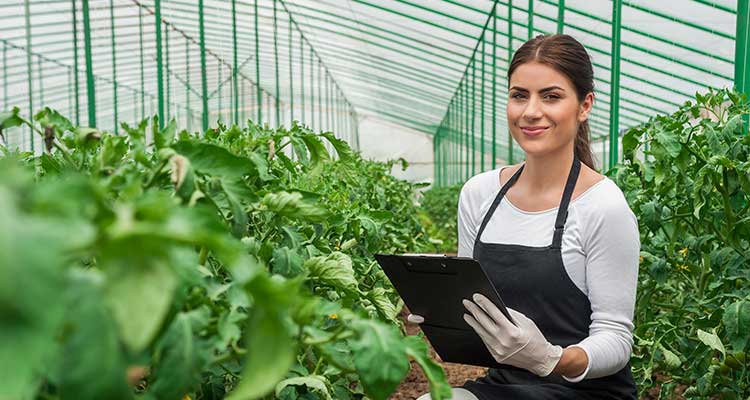Trends in greenhouse growing continue to evolve in new ways to meet the demands of the planet's growing populations. From low-tech tunnel and hoop houses to vertical farming and hydroponic greenhouses, food growers are combining best growing practices with the latest advancements to make their greenhouses more efficient.
Whether saving money on monthly grocery bills or increasing revenue, gardeners and farmers who implement greenhouse growing will find it an excellent investment when managed successfully. The goal of greenhouse technology is to create healthy environments for plants to happily grow. When this is achieved, food growers recoup their investment and more people have access to healthy fruits and vegetables.
The first greenhouses, constructed with glass and iron and called glass houses, often grew exotic plants. Today, entire crops and fields utilize greenhouse technologies to produce more food with higher crop yields. Modern farmers are finding more and more ways to use greenhouse technology. The overarching trends in greenhouse growing typically focus on the benefits of increased crop control:
- Isolation helps to prevent insect infestations, which dramatically reduce crop yields
- Crops grown in open fields are susceptible to cross-pollination from neighboring fields that may have genetically altered plants.
- Farmers retain precision control on irrigating their plants
- Food growers can reduce or eliminate the use of harmful pesticides, which is essential for organic farming
- Greenhouses protect plants from adverse weather events such as hail, snow, and intense heat and sunlight
Because crop control is critical for a successful food production; greenhouse agriculture is a growing trend around the world
The Importance of Consistency in Crop Yields
Lettuce, cucumbers, sweet peppers and tomatoes are all traditional greenhouse crops. Modern greenhouses allow plants to grow quicker and in some instances, out of season and give farmers a boost of confidence around the growing process. Growers have more control over what goes into their fields as well as the quality and yield that comes out of them.
With the ability to micromanage crops, there is a much higher success rate even during less than ideal growing seasons. Certain seasonal crops like tomatoes and onions can be grown with higher confidence due to greenhouse technology. For example, strawberry growers have much success with producing fruit earlier than usual.
Why Low Failure Rates Matter
Crop failure can be devastating for large and small farms alike. Additionally, it is important to note that crop failure does not only occur in open fields; even in greenhouses, crops can fail when not given everything they need to thrive. Greenhouse management is time intensive. Farmers will want to invest their time and money to learn about how to grow their crops in greenhouses before making an investment in the technology.
One of the biggest benefits of the trends in greenhouse growing is that as greenhouse management technology advances it will become more effective in helping to prevent crop failure
Every farmer knows that weather does not always cooperate with their crop’s growing season; freak storms can destroy a year’s worth of hard work. While greenhouse technologies like plastic hoop houses and low tunnels can’t always protect seedlings from the most extreme weather, they can make a big difference when it comes to colder temperatures and in some cases, even snow.
Creating Hospitable Growing Habitats for Out of Season Crops
Modern greenhouses can be a viable solution for creating habitats for out of season crops. Even though there are high upfront expenses associated with greenhouse technology, with successful management, it’s possible to see increased revenue from your crops.
Prices for produce fluctuate as vegetables come in and out of season. Out of season crops can fetch larger profits on the market, especially when grown locally. Produce sold at farmer’s markets is often the best way for consumers to get high-quality fruits and vegetables. Buying out of season vegetables like lettuces and strawberries, for example, is easier with greenhouse technology.
Whether saving money on monthly grocery bills or increasing revenue, gardeners and farmers who build greenhouses will find it an excellent investment when managed successfully. On a wider scale, the trends in greenhouse growing will surely influence the ways in which we ship, distribute, and purchase raw produce in the future.



